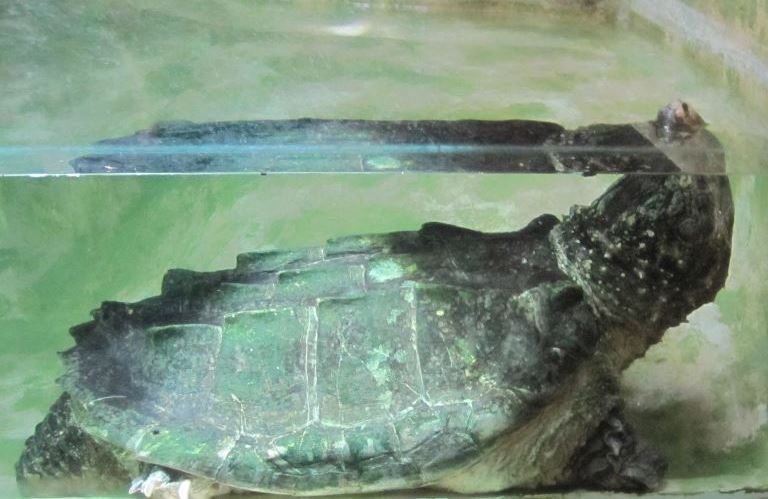Alligator Snapping Turtle Macrochelys temminckii


The Alligator Snapping Turtle is native to freshwater habitat in the southeastern USA.
Males rarely leave the water all their lives but females lay eggs on land.
In 2014, two further species were proposed and one, the Suwannee Snapping Turtle (M. suwanniensis)
of the Suwannee River, Georgia and Florida has been accepted as a new species.


It is much larger than the Common Snapping Turtle, with a much bigger gape and a sharp beak.
It can grow over a metre in length and weigh nearly 100kg. It has good camouflage with its algae-covered, dark carapace with
rows of spiked scutes (scales) and has a worm-like appendage on its tongue used as a lure for prey (fish, molluscs, amphibians
and even other terrapins, snakes and small alligators).
In theory they can live for over 100 years but in practice they are threatened by habitat loss, pollution, the pet trade and their sought-after meat.


